Towards Carbon Neutrality: The Impact of Renewable Energy Development on Carbon Emission Efficiency
Abstract
:1. Introduction
2. Literature Review and Research Gap
2.1. Carbon Emission Efficiency
2.2. Relevant Studies on Renewable Energy Development
3. Methodology and Data
3.1. Methodology
3.1.1. DEA Game Cross-Efficiency Model Considering Undesired Outputs
3.1.2. Random Forest Model
- (1)
- Decision tree
- (2)
- Bagging
- (3)
- Random forest
3.2. Description of Variables and Data
3.2.1. Explained Variable
3.2.2. Explanatory Variable
3.2.3. Control Variables
- (1)
- Financial development (FIN). The impact of financial development on carbon emissions is consistent with the law of ‘short-term pain, long-term gain’ [69]. Financial development can improve the efficiency of the allocation of financial assets and can increase the inflow of intermediate goods to final goods when increasing the scale of production. This affects the carbon emission efficiency in the process [70].
- (2)
- Industrial structure (IS). China needs to change its industrial structure by focusing on industrial groups with linkage characteristics if it wants to reduce CO2 emissions [71]. According to the statistics, industrial carbon emissions account for more than 70% of the total carbon emissions in China, so optimizing the industrial structure and actively developing the tertiary industries will have a direct impact on the carbon emission efficiency [72,73].
- (3)
- Environmental regulation (ER). Environmental policies can produce significant adjustments in terms of the energy structure, industrial structure, and technological innovation [73,74]. Therefore, for energy-intensive industries, environmental regulation can promote CO2 emissions reductions and, thereby, have an impact on the carbon emission efficiency [75].
- (4)
- Openness (OPEN). Foreign trade has led to a rapid increase in unjustified carbon emissions [76]. The development of foreign trade causes an economic transfer and also a pollution transfer, which in turn inevitably leads to a carbon emission spillover, both of which have an impact on the carbon emission efficiency at the same time [77].
- (5)
- Government size (GOV). The expansion of the government’s size due to inter-governmental competition will, on the one hand, lead to the deterioration of the quality of the environment in a region, and, on the other hand, give the government the ability to deploy more financial resources to promote regional economic development [78].
- (6)
- Energy intensity (EI). Currently, China’s energy use is still dominated by fossil energy, which may be the main reason for China’s carbon emissions. Energy intensity is an important indicator by which to measure energy efficiency [79], so a decrease in energy intensity means an increase in energy efficiency, which is the main reason for a reduction in carbon emissions [80].
- (7)
- Foreign direct investment (FDI). Foreign direct investment can directly influence the country’s production, which affects both economic development and carbon emissions to some extent. At the same time, foreign investment will improve the country’s level of advanced technology and management style, which indicates that there is a spillover effect of FDI on the carbon emission efficiency [72].
3.2.4. Data
4. Empirical Results and Discussion
4.1. Empirical Results
4.1.1. Carbon Emission Efficiency
4.1.2. Empirical Analysis of the Random Forest Model
4.1.3. Regional Heterogeneity Analysis
4.2. Discussion
5. Conclusions
- (1)
- The impact of renewable energy development on carbon emission efficiency is very important and significant. It mainly shows a trend of inhibition during the early stage and promotion later, when an obviously reasonable range is reached.
- (2)
- Energy intensity, foreign trade, and government size are the three most prominent factors influencing carbon emission efficiency. They all have a greater influence than renewable energy development. Their influence directions are roughly negative, positive, and negative, respectively.
- (3)
- Through the regional heterogeneity analysis, it was found that there is no difference in the trend of the influence of renewable energy development on the carbon emission efficiency. Still, there was a great difference in the values, especially in the reasonable range. The eastern region has the lowest reasonable range of renewable energy development but the highest reasonable range of carbon emission efficiency; the western region has the highest reasonable range of renewable energy development but the lowest reasonable range of carbon emission efficiency.
5.1. Policy Implications
- (1)
- Encourage technological innovation and promote the sustainable development of energy transition.
- (2)
- Persistent development of renewable energy.
- (3)
- Formulate targeted renewable energy development strategies according to local conditions.
5.2. Outlook
Author Contributions
Funding
Institutional Review Board Statement
Informed Consent Statement
Data Availability Statement
Conflicts of Interest
Appendix A
| Province | 2006 | 2007 | 2008 | 2009 | 2010 | 2011 | 2012 |
| Beijing | 0.5382 | 0.5188 | 0.5095 | 0.5279 | 0.5242 | 0.5901 | 0.6280 |
| Tianjin | 0.4622 | 0.4489 | 0.4218 | 0.4179 | 0.3994 | 0.4041 | 0.4277 |
| Hebei | 0.3482 | 0.3115 | 0.2727 | 0.2517 | 0.2600 | 0.2766 | 0.3082 |
| Shanxi | 0.2654 | 0.2262 | 0.1892 | 0.1801 | 0.1964 | 0.2123 | 0.2315 |
| Inner Mongolia | 0.3086 | 0.2672 | 0.2330 | 0.2450 | 0.2372 | 0.2385 | 0.2565 |
| Liaoning | 0.3485 | 0.3107 | 0.2861 | 0.2758 | 0.2867 | 0.3020 | 0.3316 |
| Jilin | 0.3543 | 0.3315 | 0.3129 | 0.2937 | 0.2891 | 0.3029 | 0.3261 |
| Heilongjiang | 0.4071 | 0.3651 | 0.3234 | 0.2924 | 0.2939 | 0.3076 | 0.3316 |
| Shanghai | 0.5220 | 0.4991 | 0.4648 | 0.4652 | 0.4455 | 0.4609 | 0.5027 |
| Jiangsu | 0.4643 | 0.4338 | 0.4092 | 0.3914 | 0.3870 | 0.4079 | 0.4517 |
| Zhejiang | 0.4973 | 0.4580 | 0.4355 | 0.4052 | 0.4083 | 0.4366 | 0.4791 |
| Anhui | 0.3781 | 0.3516 | 0.3219 | 0.3123 | 0.3227 | 0.3423 | 0.3814 |
| Fujian | 0.5017 | 0.4639 | 0.4440 | 0.4209 | 0.4118 | 0.4298 | 0.4657 |
| Jiangxi | 0.4020 | 0.3641 | 0.3400 | 0.3481 | 0.3474 | 0.3712 | 0.4075 |
| Shandong | 0.3976 | 0.3729 | 0.3471 | 0.3232 | 0.3199 | 0.3236 | 0.3534 |
| Henan | 0.3852 | 0.3500 | 0.3248 | 0.2925 | 0.2905 | 0.2885 | 0.3214 |
| Hubei | 0.3454 | 0.3453 | 0.3229 | 0.3084 | 0.3167 | 0.3305 | 0.3687 |
| Hunan | 0.3817 | 0.3510 | 0.3175 | 0.3076 | 0.3170 | 0.3385 | 0.3786 |
| Guangdong | 0.6088 | 0.5786 | 0.5396 | 0.5116 | 0.5051 | 0.5287 | 0.5616 |
| Guangxi | 0.4194 | 0.3989 | 0.3806 | 0.3291 | 0.3180 | 0.3298 | 0.3459 |
| Hainan | 0.4576 | 0.3841 | 0.3508 | 0.3377 | 0.3430 | 0.3495 | 0.3761 |
| Chongqing | 0.3370 | 0.3022 | 0.2745 | 0.3007 | 0.3062 | 0.3445 | 0.3872 |
| Sichuan | 0.3516 | 0.3278 | 0.2879 | 0.2734 | 0.2908 | 0.3237 | 0.3675 |
| Guizhou | 0.2245 | 0.2055 | 0.1933 | 0.1953 | 0.2024 | 0.2282 | 0.2704 |
| Yunnan | 0.2999 | 0.2834 | 0.2669 | 0.2438 | 0.2443 | 0.2626 | 0.2938 |
| Shaanxi | 0.3257 | 0.3088 | 0.2863 | 0.2844 | 0.2844 | 0.3042 | 0.3295 |
| Gansu | 0.2869 | 0.2663 | 0.2389 | 0.2227 | 0.2327 | 0.2473 | 0.2799 |
| Qinghai | 0.2349 | 0.2250 | 0.2003 | 0.1959 | 0.2077 | 0.2100 | 0.2221 |
| Ningxia | 0.1940 | 0.1778 | 0.1582 | 0.1632 | 0.1702 | 0.1838 | 0.2022 |
| Xinjiang | 0.2895 | 0.2629 | 0.2308 | 0.2017 | 0.2164 | 0.2201 | 0.2362 |
| Province | 2013 | 2014 | 2015 | 2016 | 2017 | 2018 | Average |
| Beijing | 0.6667 | 0.6749 | 0.6815 | 0.6860 | 0.7232 | 0.7640 | 0.6179 |
| Tianjin | 0.4413 | 0.4302 | 0.4019 | 0.3970 | 0.4114 | 0.4160 | 0.4215 |
| Hebei | 0.3103 | 0.2992 | 0.2699 | 0.2585 | 0.2701 | 0.2912 | 0.2868 |
| Shanxi | 0.2203 | 0.2054 | 0.1836 | 0.1679 | 0.1973 | 0.2304 | 0.2081 |
| Inner Mongolia | 0.2612 | 0.2495 | 0.2185 | 0.2008 | 0.1793 | 0.1989 | 0.2380 |
| Liaoning | 0.3512 | 0.3441 | 0.3150 | 0.2353 | 0.2501 | 0.2896 | 0.3021 |
| Jilin | 0.3468 | 0.3385 | 0.3150 | 0.3042 | 0.2999 | 0.3133 | 0.3176 |
| Heilongjiang | 0.3478 | 0.3213 | 0.2829 | 0.2564 | 0.2739 | 0.2933 | 0.3151 |
| Shanghai | 0.5117 | 0.5369 | 0.5246 | 0.5280 | 0.5454 | 0.5837 | 0.5070 |
| Jiangsu | 0.4666 | 0.4653 | 0.4566 | 0.4516 | 0.4764 | 0.5059 | 0.4437 |
| Zhejiang | 0.4871 | 0.4816 | 0.4631 | 0.4569 | 0.4741 | 0.5028 | 0.4604 |
| Anhui | 0.3804 | 0.3829 | 0.3568 | 0.3520 | 0.3640 | 0.3919 | 0.3568 |
| Fujian | 0.4805 | 0.4621 | 0.4432 | 0.4339 | 0.4503 | 0.4793 | 0.4529 |
| Jiangxi | 0.4186 | 0.4171 | 0.3878 | 0.3818 | 0.3893 | 0.4160 | 0.3839 |
| Shandong | 0.3747 | 0.3701 | 0.3425 | 0.3312 | 0.3439 | 0.3639 | 0.3511 |
| Henan | 0.3272 | 0.3261 | 0.3004 | 0.2932 | 0.3015 | 0.3211 | 0.3171 |
| Hubei | 0.3995 | 0.3994 | 0.3722 | 0.3615 | 0.3705 | 0.4000 | 0.3570 |
| Hunan | 0.3960 | 0.3910 | 0.3622 | 0.3528 | 0.3602 | 0.3900 | 0.3572 |
| Guangdong | 0.5682 | 0.5560 | 0.5258 | 0.5100 | 0.5307 | 0.5498 | 0.5442 |
| Guangxi | 0.3546 | 0.3498 | 0.3304 | 0.3184 | 0.3142 | 0.3458 | 0.3488 |
| Hainan | 0.3814 | 0.3685 | 0.3279 | 0.3189 | 0.3300 | 0.3431 | 0.3591 |
| Chongqing | 0.4218 | 0.4248 | 0.4007 | 0.4109 | 0.4226 | 0.4501 | 0.3679 |
| Sichuan | 0.3832 | 0.3774 | 0.3487 | 0.3534 | 0.3724 | 0.4132 | 0.3439 |
| Guizhou | 0.2866 | 0.2992 | 0.2872 | 0.2757 | 0.3061 | 0.3329 | 0.2544 |
| Yunnan | 0.3027 | 0.2987 | 0.2738 | 0.2558 | 0.2630 | 0.2719 | 0.2739 |
| Shaanxi | 0.3304 | 0.3210 | 0.2835 | 0.2698 | 0.2978 | 0.3257 | 0.3040 |
| Gansu | 0.2820 | 0.2826 | 0.2466 | 0.2357 | 0.2478 | 0.2833 | 0.2579 |
| Qinghai | 0.2153 | 0.2057 | 0.1829 | 0.1685 | 0.1619 | 0.1739 | 0.2003 |
| Ningxia | 0.2017 | 0.1917 | 0.1674 | 0.1549 | 0.1545 | 0.1744 | 0.1765 |
| Xinjiang | 0.2324 | 0.2166 | 0.1884 | 0.1654 | 0.1819 | 0.2065 | 0.2191 |

References
- Zhang, X.; Dong, F. How virtual social capital affects behavioral intention of sustainable clothing consumption pattern in developing economies? A case study of China. Resour. Conserv. Recycl. 2021, 170, 105616. [Google Scholar] [CrossRef]
- Dong, F.; Li, Y.; Zhang, X.; Zhu, J.; Zheng, L. How does industrial convergence affect the energy efficiency of manufacturing in newly industrialized countries? Fresh evidence from China. J. Clean. Prod. 2021, 316, 128316. [Google Scholar] [CrossRef]
- Chu, S.; Majumdar, A. Opportunities and challenges for a sustainable energy future. Nature 2012, 488, 294–303. [Google Scholar] [CrossRef] [PubMed]
- United Nations Framework Convention on Climate Change (UNFCCC). UNFCCC Annual Report 2020. 2021. Available online: https://unfccc.int/sites/default/files/resource/UNFCCC_Annual_Report_2020.pdf (accessed on 10 May 2021).
- Intergovernmental Panel on Climate Change (IPCC). AR5 Synthesis Report: Climate Change 2014. 2014. Available online: https://www.ipcc.ch/site/assets/uploads/2018/02/SYR_AR5_FINAL_full.pdf (accessed on 14 October 2014).
- Rauf, A.; Zhang, J.; Li, J.; Amin, W. Structural Changes, Energy Consumption and Carbon Emissions in China: Empirical Evidence from ARDL Bound Testing Model. Struct. Struct. Chang. Econ. Dyn. 2018, 47, 194–206. [Google Scholar] [CrossRef]
- Dong, F.; Yu, B.; Pan, Y. Examining the synergistic effect of CO2 emissions on PM2.5 emissions reduction: Evidence from China. J. Clean. Prod. 2019, 223, 759–771. [Google Scholar] [CrossRef]
- Pan, Y.; Dong, F. Design of energy use rights trading policy from the perspective of energy vulnerability. Energy Policy 2022, 160, 112668. [Google Scholar] [CrossRef]
- Xu, L.; Fan, M.; Yang, L.; Shao, S. Heterogeneous green innovations and carbon emission performance: Evidence at China’s city level. Energy Econ. 2021, 99, 105269. [Google Scholar] [CrossRef]
- Fang, D.; Yu, B. Driving mechanism and decoupling effect of PM2.5 emissions: Empirical evidence from China’s industrial sector. Energy Policy 2021, 149, 112017. [Google Scholar] [CrossRef]
- Yu, B.; Fang, D.; Meng, J. Analysis of the generation efficiency of disaggregated renewable energy and its spatial heterogeneity influencing factors: A case study of China. Energy 2021, 234, 121295. [Google Scholar] [CrossRef]
- Qiu, Q.; Li, S.; Xia, Q. Renewable Energy Consumption-Energy-Related CO2 Emission Nexus for China. Ecol. Econ. 2017, 33, 19–23. (In Chinese) [Google Scholar]
- Zhang, M.; Yang, Z.; Liu, L.; Zhou, D. Impact of renewable energy investment on carbon emissions in China—An empirical study using a nonparametric additive regression model. Sci. Total Environ. 2021, 785, 147109. [Google Scholar] [CrossRef]
- Dong, F.; Pan, Y.; Li, Y.; Zhang, S. How public and government matter in industrial pollution mitigation performance: Evidence from China. J. Clean. Prod. 2021, 306, 127099. [Google Scholar] [CrossRef]
- Pan, X.; Pan, X.; Li, C.; Song, J.; Zhang, J. Effects of China’s environmental policy on carbon emission efficiency. Int. J. Clim. Chang. Strateg. Manag. 2019, 11, 326–340. [Google Scholar] [CrossRef] [Green Version]
- Liu, Y.; Zhao, G.; Zhao, Y. An analysis of Chinese provincial carbon dioxide emission efficiencies based on energy consumption structure. Energy Policy 2016, 96, 524–533. [Google Scholar] [CrossRef]
- Blohm, M. An Enabling Framework to Support the Sustainable Energy Transition at the National Level. Sustainability 2021, 13, 3834. [Google Scholar] [CrossRef]
- D’Adamo, I.; Falcone, P.M.; Imbert, E.; Morone, P. Exploring regional transitions to the bioeconomy using a socio-economic indicator: The case of Italy. Econ. Politica 2020, 1–33. [Google Scholar] [CrossRef]
- Dialga, I. Evaluating Normandy’s sustainable development and energy transition policies. J. Clean. Prod. 2021, 305, 127096. [Google Scholar] [CrossRef]
- Falcone, P.M.; Imbert, E.; Sica, E.; Morone, P. Towards a bioenergy transition in Italy? Exploring regional stakeholder perspectives towards the Gela and Porto Marghera biorefineries. Energy Res. Soc. Sci. 2021, 80, 102238. [Google Scholar] [CrossRef]
- Höfer, T.; Madlener, R. A participatory stakeholder process for evaluating sustainable energy transition scenarios. Energy Policy 2020, 139, 111277. [Google Scholar] [CrossRef] [Green Version]
- Güney, T. Renewable energy, non-renewable energy and sustainable development. Int. J. Sustain. Dev. World Ecol. 2019, 26, 389–397. [Google Scholar] [CrossRef]
- Li, W.; Lu, C.; Zhang, Y. Prospective exploration of future renewable portfolio standard schemes in China via a multi-sector CGE model. Energy Policy 2019, 128, 45–56. [Google Scholar] [CrossRef]
- Yu, F.R.; Zhang, P.; Xiao, W.; Choudhury, P. Communication Systems for Grid Integration of Renewable Energy Resources. IEEE Netw. 2011, 25, 22–29. [Google Scholar] [CrossRef] [Green Version]
- Saad, W.; Taleb, A. The causal relationship between renewable energy consumption and economic growth: Evidence from Europe. Clean Technol. Environ. Policy 2018, 20, 127–136. [Google Scholar] [CrossRef]
- Kaya, Y.; Yokobori, K. Environment, Energy, and Economy: Strategies for Sustainability; United Nations University Press: Tokyo, Japan, 1997. [Google Scholar]
- Mielnik, O.; Goldemberg, J. Communication The evolution of the “carbonization index” in developing countries. Energy Policy 1999, 27, 307–308. [Google Scholar] [CrossRef]
- Meeusen, W.; Julien, V. Efficiency Estimation from Cobb-Douglas Production Functions with Composed Error. Int. Econ. Rev. 1977, 18, 435–444. [Google Scholar] [CrossRef]
- Charnes, A.; Cooper, W.; Rhodes, E. Measuring the efficiency of decision making units. Eur. J. Oper. Res. 1978, 2, 429–444. [Google Scholar] [CrossRef]
- Liu, Y.; Dong, F. How technological innovation impacts urban green economy efficiency in emerging economies: A case study of 278 Chinese cities. Resour. Conserv. Recycl. 2021, 169, 105534. [Google Scholar] [CrossRef]
- Du, Q.; Deng, Y.; Zhou, J.; Wu, J. Spatial spillover effect of carbon emission efficiency in the construction industry of China. Environ. Sci. Pollut. Res. 2021, 1–14. [Google Scholar] [CrossRef]
- Tone, K. A slacks-based measure of efficiency in data envelope analysis. Eur. J. Oper. Res. 2001, 130, 498–509. [Google Scholar] [CrossRef] [Green Version]
- Tone, K. A slacks-based measure of super-efficiency in data envelopment analysis. Eur. J. Oper. Res. 2002, 143, 32–41. [Google Scholar] [CrossRef] [Green Version]
- Fried, H.O.; Lovell, C.A.K.; Schmidt, S.S.; Yaisawaring, S. Accounting for Environmental Effects and Statistical Noise in Data Envelopment Analysis. J. Product. Anal. 2002, 17, 121–136. [Google Scholar] [CrossRef]
- Tone, K.; Tsutsui, M. An epsilon-based measure of efficiency in DEA-A third pole of technical efficiency. Eur. J. Oper. Res. 2010, 207, 1554–1563. [Google Scholar] [CrossRef]
- Oh, D. A global Malmquist-Luenberger productivity index. J. Product. Anal. 2010, 34, 183–197. [Google Scholar] [CrossRef]
- Toshiyuki, T.; Yuan, Y. Social sustainability measured by intermediate approach for DEA environmental assessment: Chinese regional planning for economic development and pollution prevention. Energy Econ. 2017, 66, 154–166. [Google Scholar]
- Cheng, Z.; Li, L.; Liu, J.; Zhang, H. Total-factor carbon emission efficiency of China’s provincial industrial sector and its dynamic evolution. Renew. Sustain. Energy Rev. 2018, 94, 330–339. [Google Scholar] [CrossRef]
- Zeng, L.; Lu, H.; Liu, Y.; Zhou, Y.; Hu, H. Analysis of Regional Differences and Influencing Factors on China’s Carbon Emission Efficiency in 2005–2015. Energies 2019, 12, 3081. [Google Scholar] [CrossRef] [Green Version]
- Xie, Z.; Wu, R.; Wang, S. How technological progress affects the carbon emission efficiency? Evidence from national panel quantile regression. J. Clean. Prod. 2021, 307, 127133. [Google Scholar] [CrossRef]
- Li, J.; Ma, J.; Wei, W. Analysis and Evaluation of The Regional Characteristics of Carbon Emission Efficiency for China. Sustainability 2020, 12, 3138. [Google Scholar] [CrossRef] [Green Version]
- Zhang, M.; Li, L.; Cheng, Z. Research on carbon emission efficiency in the Chinese construction industry based on a three-stage DEA-Tobit model. Environ. Sci. Pollut. Res. 2021, 1–17. [Google Scholar] [CrossRef]
- Zhong, J. Biased Technical Change, Factor Substitution, and Carbon Emissions Efficiency in China. Sustainability 2019, 11, 955. [Google Scholar] [CrossRef] [Green Version]
- Wang, G.; Deng, X.; Wang, J.; Zhang, F.; Liang, S. Carbon emission efficiency in China: A spatial panel data analysis. China Econ. Rev. 2019, 56, 101313. [Google Scholar] [CrossRef]
- Sheng, P.; Li, J.; Zhai, M.; Huang, S. Coupling of economic growth and reduction in carbon emissions at the efficiency level: Evidence from China. Energy 2020, 213, 118747. [Google Scholar] [CrossRef]
- Sun, W.; Huang, C. How does urbanization affect carbon emission efficiency? Evidence from China. J. Clean. Prod. 2020, 272, 122828. [Google Scholar] [CrossRef]
- Ning, L.; Zheng, W.; Zeng, L. Research on China’s Carbon Dioxide Emissions Efficiency from 2007 to 2016: Based on Two Stage Super Efficiency SBM Model and Tobit Model. Acta Sci. Nat. Univ. Pekin. 2021, 57, 181–188. (In Chinese) [Google Scholar]
- Wang, K.; Wu, M.; Sun, Y.; Shi, X.; Sun, A.; Zhang, P. Resource abundance, industrial structure, and regional carbon emissions Efficiency in China. Resour. Policy 2019, 60, 203–214. [Google Scholar] [CrossRef]
- Pei, Y.; Zhu, Y.; Wang, N. How do corruption and energy efficiency affect the carbon emission performance of China’s industrial sectors? Environ. Sci. Pollut. Res. 2021, 28, 31403–31420. [Google Scholar] [CrossRef]
- He, A.; Xue, Q.; Zhao, R.; Wang, D. Renewable energy technological innovation, market forces, and carbon emission efficiency. Sci. Total Environ. 2021, 796, 148908. [Google Scholar] [CrossRef]
- International Energy Agency (IEA). World Energy Investment 2020. 2020. Available online: https://iea.blob.core.windows.net/assets/ef8ffa01-9958-49f5-9b3b-7842e30f6177/WEI2020.pdf (accessed on 1 May 2020).
- Yu, B.; Fang, D.; Dong, F. Study on the evolution of thermal power generation and its nexus with economic growth: Evidence from EU regions. Energy 2020, 205, 118053. [Google Scholar] [CrossRef]
- Yu, B.; Fang, D.; Yu, H.; Zhao, C. Temporal-spatial determinants of renewable energy penetration in electricity production: Evidence from EU countries. Renew. Energy 2021, 180, 438–451. [Google Scholar] [CrossRef]
- Shahbaz, M.; Raghutla, C.; Chittedi, K.R.; Jiao, Z.; Vo, X.V. The effect of renewable energy consumption on economic growth: Evidence from the renewable energy country attractive index. Energy 2020, 207, 118162. [Google Scholar] [CrossRef]
- Chen, C.; Pinar, M.; Stengos, T. Renewable energy consumption and economic growth nexus: Evidence from a threshold model. Energy Policy 2020, 139, 111295. [Google Scholar] [CrossRef]
- Zhao, W.; Zou, R.; Yuan, G.; Wang, H.; Tan, Z. Long-Term Cointegration Relationship between China’s Wind Power Development and Carbon Emissions. Sustainability 2019, 11, 4625. [Google Scholar] [CrossRef] [Green Version]
- Khan, H.; Khan, I.; Binh, T.T. The heterogeneity of renewable energy consumption, carbon emission and financial development in the globe: A panel quantile regression approach. Energy Rep. 2020, 6, 859–867. [Google Scholar] [CrossRef]
- Yu, S.; Hu, X.; Li, L.; Chen, H. Does the development of renewable energy promote carbon reduction? Evidence from Chinese provinces. J. Environ. Manag. 2020, 268, 110634. [Google Scholar] [CrossRef]
- Jin, T.; Kim, J. What is better for mitigating carbon emissions—Renewable energy or nuclear energy? A panel data analysis. Renew. Sustain. Energy Rev. 2018, 91, 464–471. [Google Scholar] [CrossRef]
- Liang, L.; Wu, J.; Cook, W.D.; Zhu, J. The DEA Game Cross-Efficiency Model and Its Nash Equilibrium. Oper. Res. 2008, 56, 1278–1288. [Google Scholar] [CrossRef] [Green Version]
- Breiman, L. Random forests. Mach. Learn. 2001, 45, 5–32. [Google Scholar] [CrossRef] [Green Version]
- Sun, J.; Zhong, G.; Huang, K.; Dong, J. Banzhaf random forests: Cooperative game theory based random forests with consistency. Neural Netw. 2018, 106, 20–29. [Google Scholar] [CrossRef]
- Utkin, L.V.; Konstantinov, A.V.; Chukanov, V.S.; Kots, M.V.; Ryabinin, M.A.; Meldo, A.A. A weighted random survival forest. Knowl.-Based Syst. 2019, 177, 136–144. [Google Scholar] [CrossRef] [Green Version]
- Meinshausen, N. Quantile Regression Forests. J. Mach. Learn. Res. 2006, 7, 983–999. [Google Scholar]
- Genuer, R.; Poggi, J. Michel. In Random Forests with R; Springer: Berlin, Germany, 2020. [Google Scholar]
- Zhang, J.; Zhang, Y. Recalculating the Capital of China and a Review of Li and Tang’s Article. Econ. Res. J. 2003, 7, 35–43, 90. (In Chinese) [Google Scholar]
- Zhang, J.; Wu, G.; Zhang, J. The Estimation of China’ s Provincial Capital Stock: 1952–2000. Econ. Res. J. 2004, 10, 35–44. (In Chinese) [Google Scholar]
- Chen, H.; Fu, H. A Comparative Study on the Measurement and Trends of Provincial Carbon Emissions in China. Stat. Decis. 2013, 5, 133–135. (In Chinese) [Google Scholar]
- Jiang, C.; Ma, X. The Impact of Financial Development on Carbon Emissions: A Global Perspective. Sustainability 2019, 11, 5241. [Google Scholar] [CrossRef] [Green Version]
- Huang, L.; Zhao, X. Impact of financial development on trade-embodied carbon dioxide emissions: Evidence from 30 provinces in China. J. Clean. Prod. 2018, 198, 721–736. [Google Scholar] [CrossRef]
- Chang, N. Changing Industrial Structure to Reduce Carbon Dioxide Emissions: A Chinese Application. J. Clean. Prod. 2015, 103, 40–48. [Google Scholar] [CrossRef]
- Chen, L.; He, F. Measurements and Factors of Carbon Emission Efficiency. Pol. J. Environ. Stud. 2017, 26, 1963–1973. [Google Scholar] [CrossRef]
- Dong, F.; Li, Y.; Qin, C.; Sun, J. How industrial convergence affects regional green development efficiency: A spatial conditional process analysis. J. Environ. Manag. 2021, 300, 113738. [Google Scholar] [CrossRef]
- Liu, C.; Ma, C.; Xie, R. Structural, Innovation and Efficiency Effects of Environmental Regulation: Evidence from China’s Carbon Emissions Trading Pilot. Environ. Resour. Econ. 2020, 75, 741–768. [Google Scholar] [CrossRef]
- Pei, Y.; Zhu, Y.; Liu, S.; Wang, X.; Cao, J. Environmental regulation and carbon emission: The mediation effect of technical efficiency. J. Clean. Prod. 2019, 236, 117599.1–117599.13. [Google Scholar] [CrossRef]
- Zhao, J.; Shen, X.; Feng, L. Research on the Relationship between Foreign Trade and Carbon Emissions based on Econometric Model. In Proceedings of the 2014 International Conference on Economic Management and Trade Cooperation (EMTC 2014), Xi’an, China, 12–13 April 2014. [Google Scholar]
- Hu, J.; Gui, S.; Zhang, W. Decoupling Analysis of China’s Product Sector Output and Its Embodied Carbon Emissions—An Empirical Study Based on Non-Competitive I-O and Tapio Decoupling Model. Sustainability 2017, 9, 815. [Google Scholar] [CrossRef] [Green Version]
- Wang, L.; Zhao, Z.; Liu, X. Effects of Intergovernmental Competition and Government Scale Expansion on Carbon Welfare Performance. Manag. Rev. 2019, 4, 263–282. (In Chinese) [Google Scholar]
- Naminse, E.Y.; Zhuang, J. Economic Growth, Energy Intensity, and Carbon Dioxide Emissions in China. Pol. J. Environ. Stud. 2018, 27, 2193–2201. [Google Scholar] [CrossRef]
- Lin, B.; Long, H. Emissions reduction in China’s chemical industry—Based on LMDI. Renew. Sustain. Energy Rev. 2016, 53, 1348–1355. [Google Scholar] [CrossRef]
- Jiao, S.; Chen, W.; Wang, J.; Wang, J.; Du, N.; Li, Q.; Wei, G. Soil microbiomes with distinct assemblies through vertical soil profiles drive the cycling of multiple nutrients in reforested ecosystems. Microbiome 2018, 6, 146. [Google Scholar] [CrossRef] [Green Version]
- Yang, L.; Xu, J. On the Impact of Regional Background on College Students Development. J. High. Educ. 2021, 2, 82–90. (In Chinese) [Google Scholar]
- Kasperowicz, R.; Bilan, Y.; Štreimikienė, D. The renewable energy and economic growth nexus in European countries. Sustain. Dev. 2020, 28, 1086–1093. [Google Scholar] [CrossRef]
- Yuan, X.; Lyu, Y.; Wang, B.; Liu, Q.; Wu, Q. China’s energy transition strategy at the city level: The role of renewable energy. J. Clean. Prod. 2018, 205, 980–986. [Google Scholar] [CrossRef]
- Kern, F.; Smith, A. Restructuring energy systems for sustainability? Energy transition policy in the Netherlands. Energy Policy 2008, 36, 4093–4103. [Google Scholar] [CrossRef]
- Dong, F.; Li, Y.; Gao, Y.; Zhu, J.; Qin, C.; Zhang, X. Energy transition and carbon neutrality: Exploring the non-linear impact of renewable energy development on carbon emission efficiency in developed countries. Resour. Conserv. Recycl. 2022, 177, 106002. [Google Scholar] [CrossRef]
- Hou, J.; Zhang, R.; Liu, P.; Zhou, L. A review and comparative analysis on energy transition in major industrialized countries. Int. J. Energy Res. 2020, 45, 1246–1268. [Google Scholar] [CrossRef]
- Yazdi, S.K.; Shakouri, B. Renewable energy, nonrenewable energy consumption, and economic growth. Energy Sources Part B 2017, 12, 1038–1045. [Google Scholar] [CrossRef]
- Zafar, M.W.; Sinha, A.; Ahmed, Z.; Qin, Q. Effects of biomass energy consumption on environmental quality: The role of education and technology in Asia-Pacific Economic Cooperation countries. Renew. Sustain. Energy Rev. 2021, 142, 110868. [Google Scholar] [CrossRef]
- Falcone, P.M. Environmental regulation and green investments: The role of green finance. Int. J. Green Econ. 2020, 14, 159–173. [Google Scholar] [CrossRef]
- Liu, Y.; Dong, F. What are the roles of consumers, automobile production enterprises, and the government in the process of banning gasoline vehicles? Evidence from a tripartite evolutionary game model. Energy 2022, 238, 122004. [Google Scholar] [CrossRef]
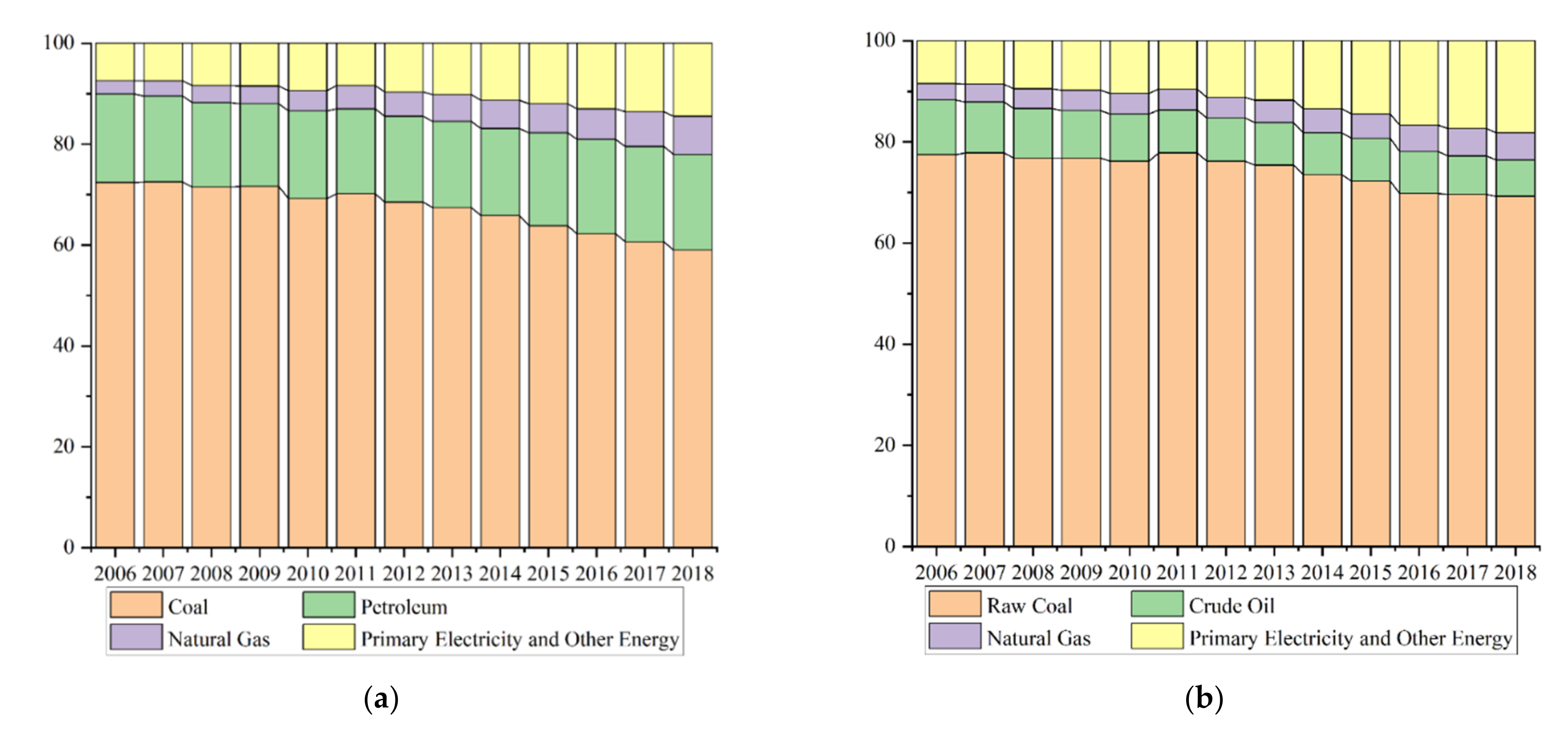
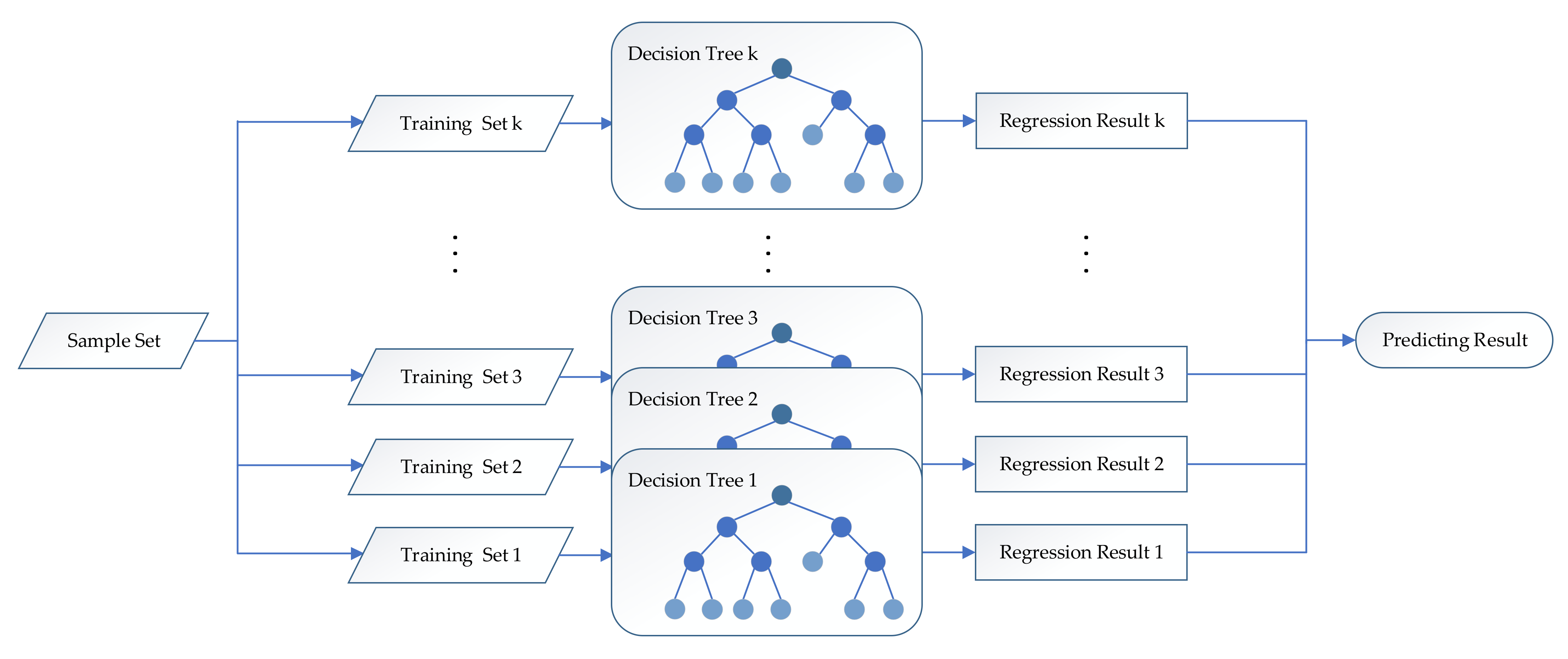
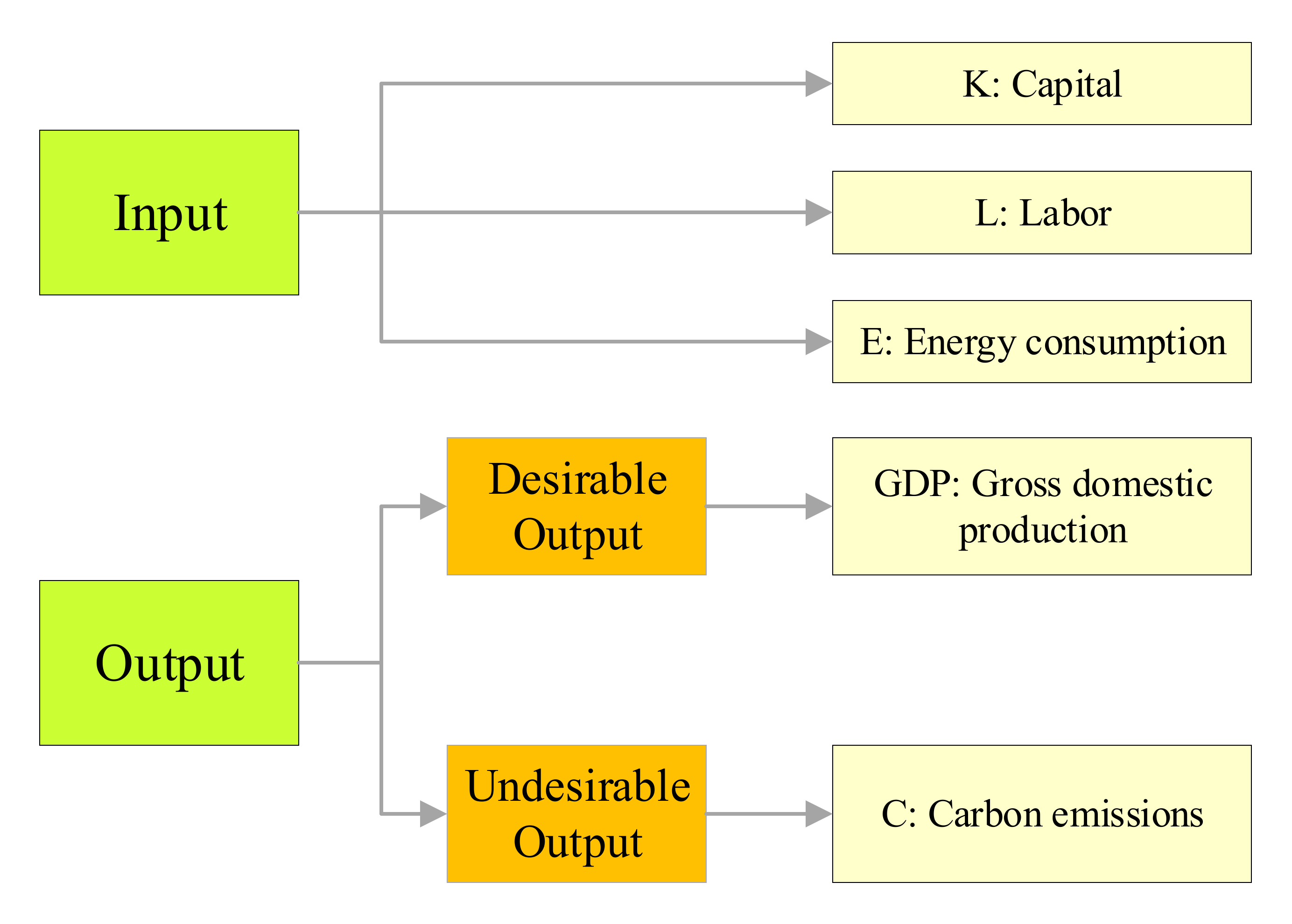
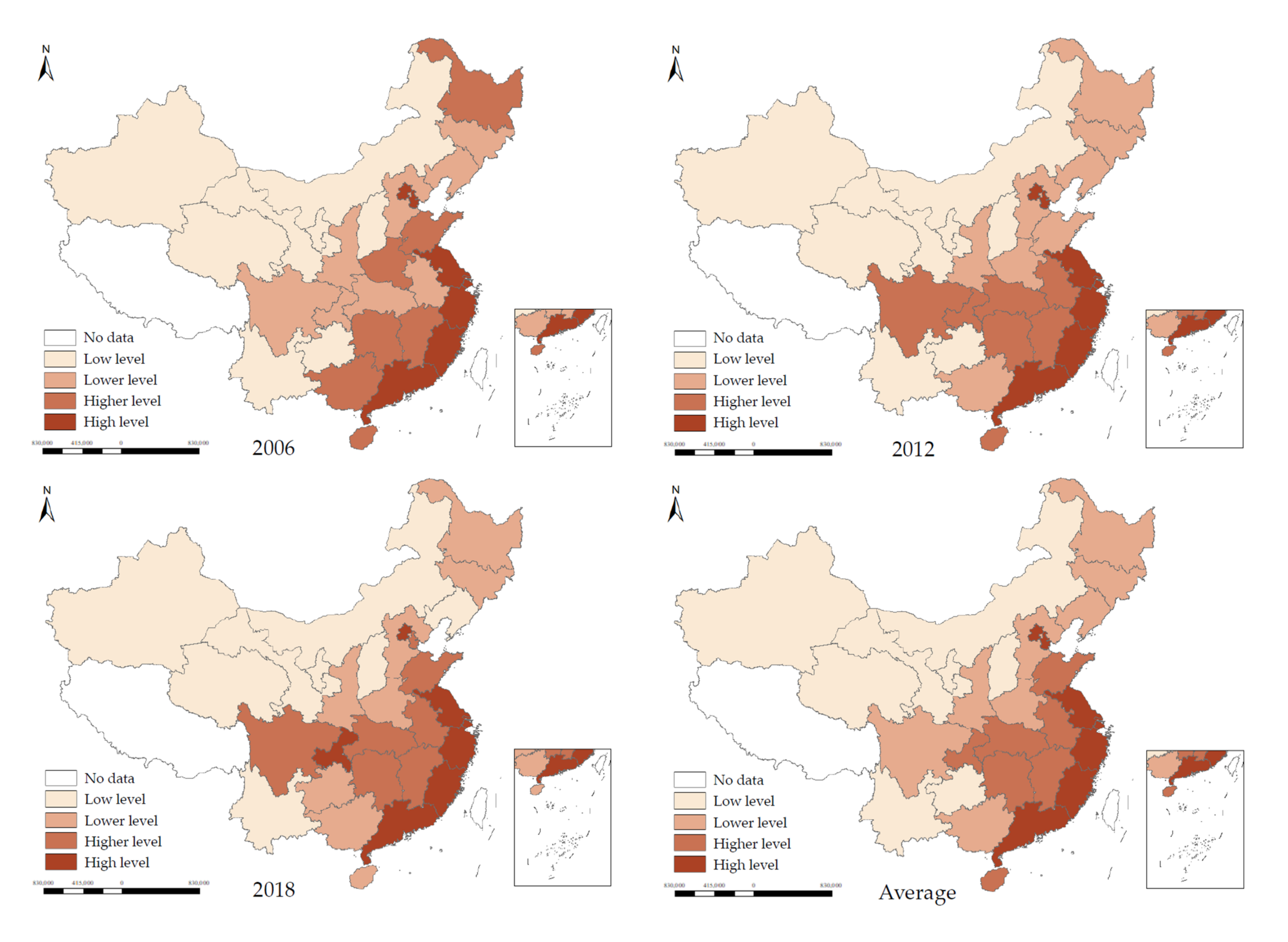
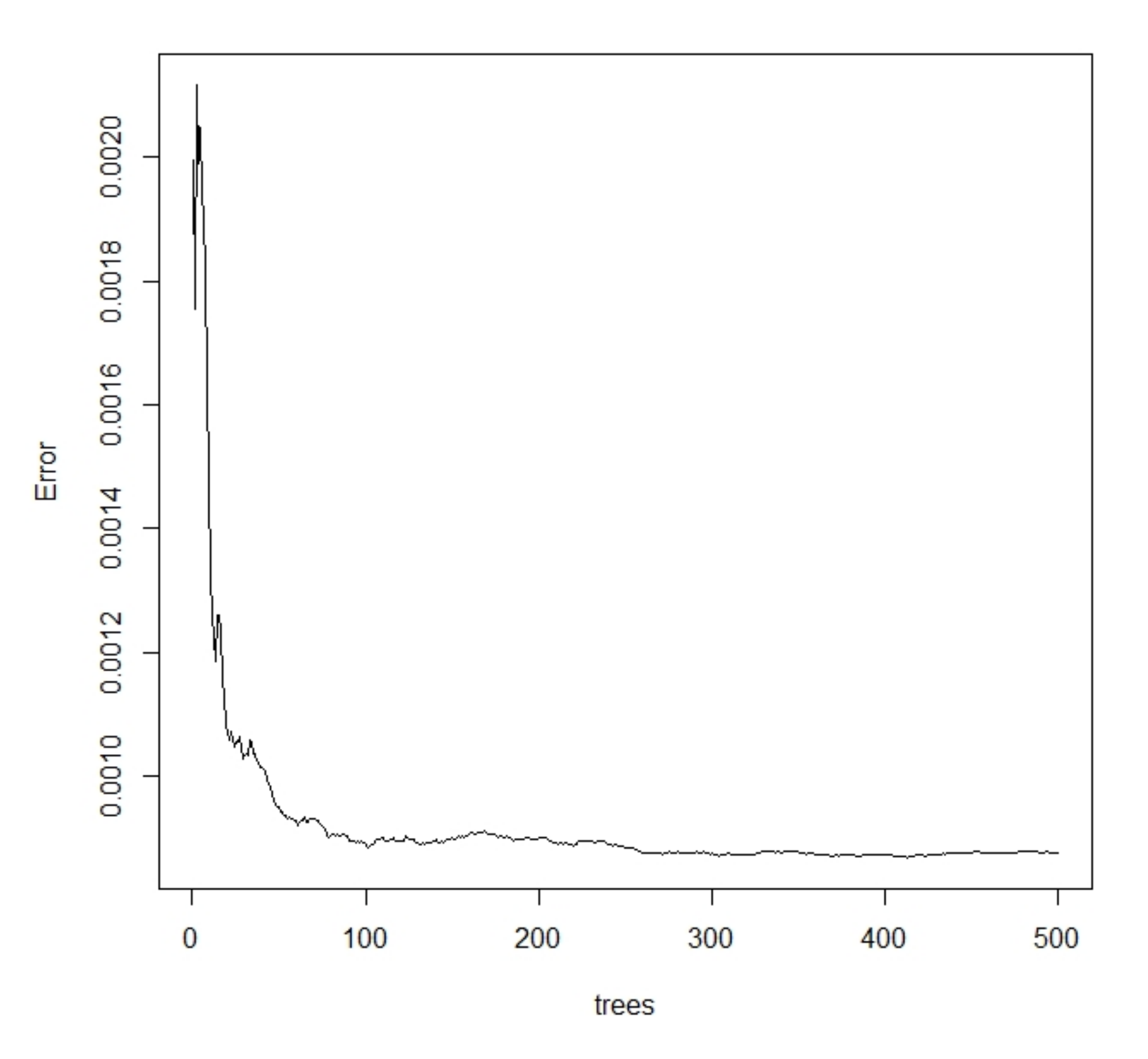
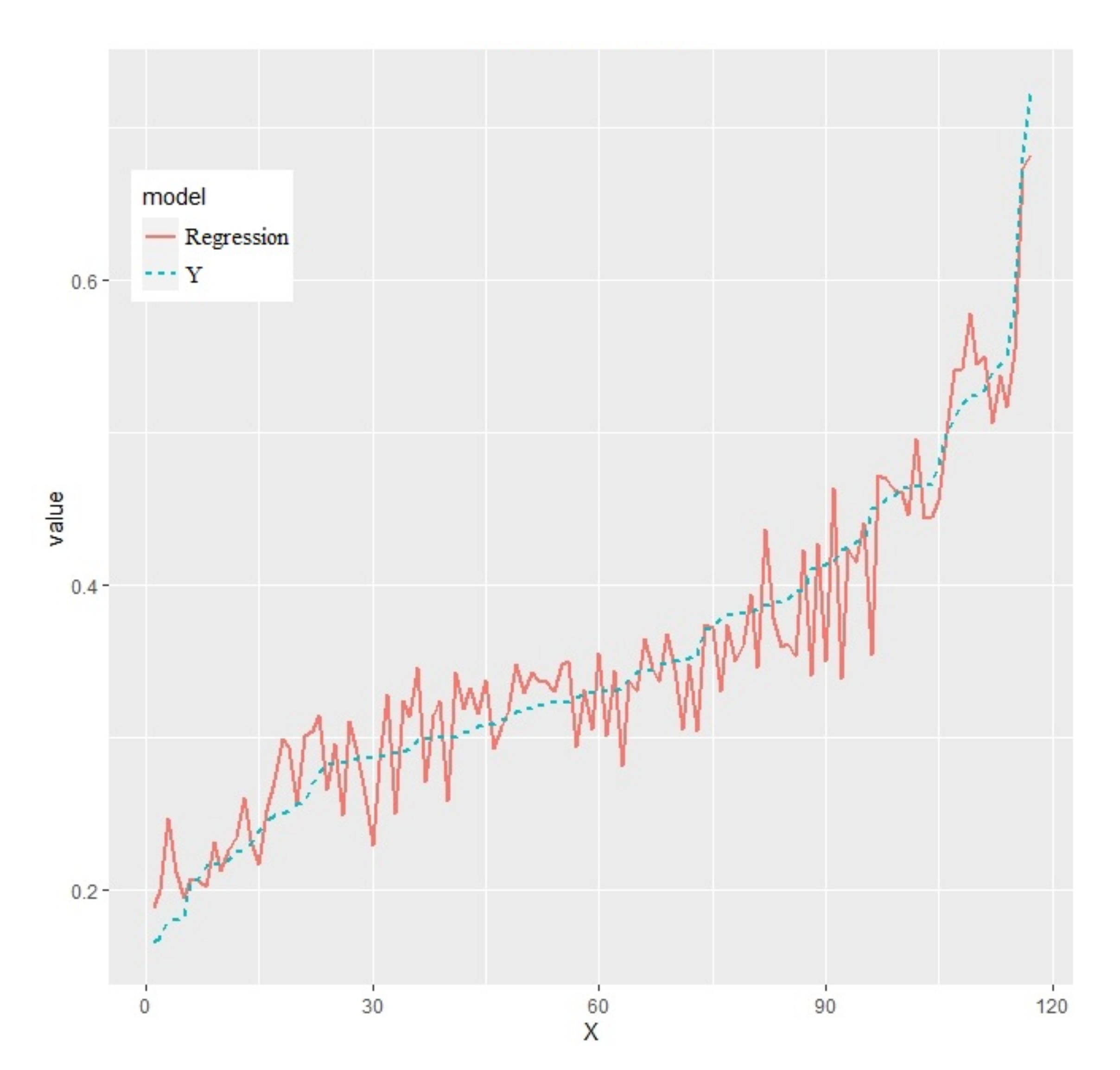
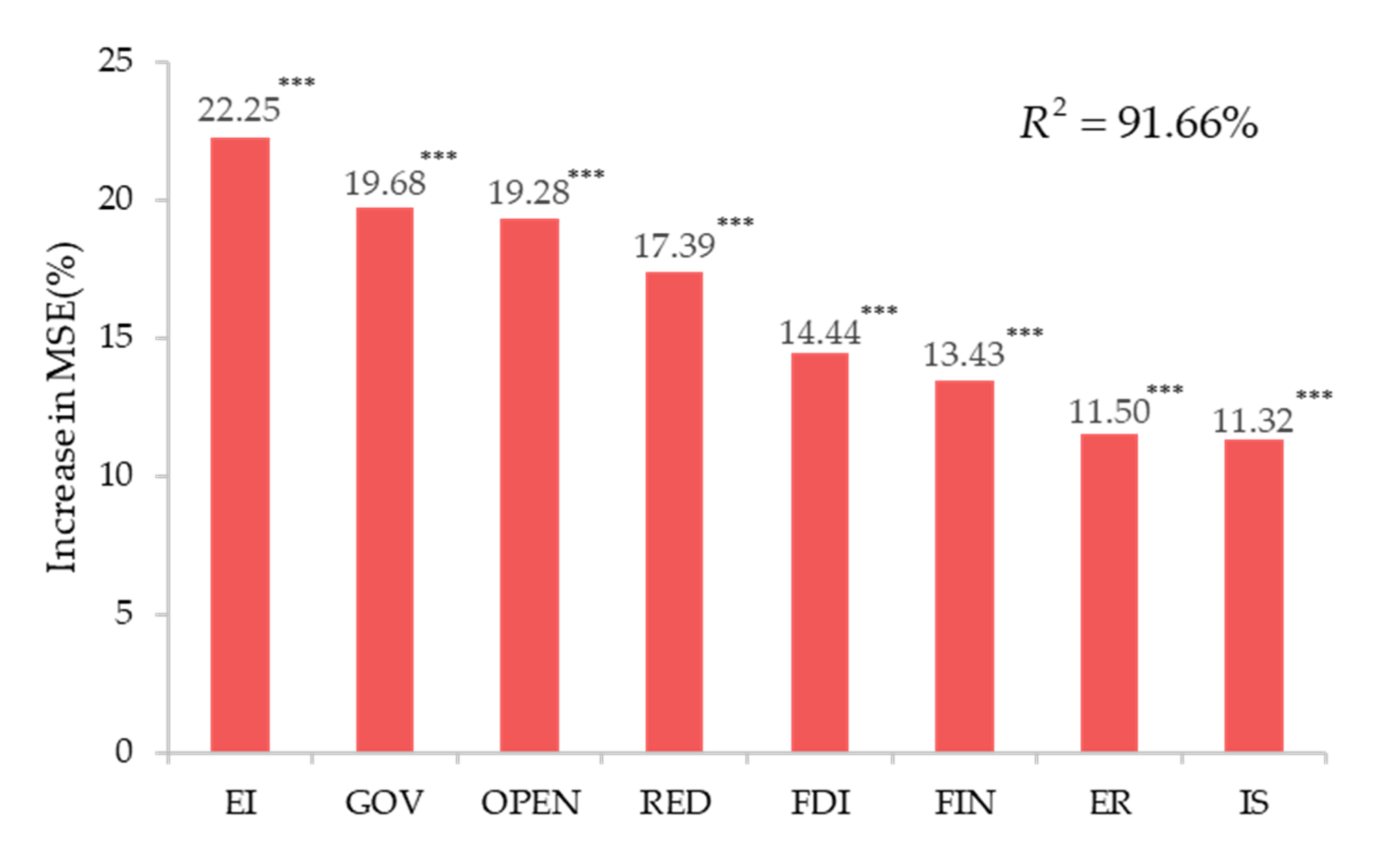
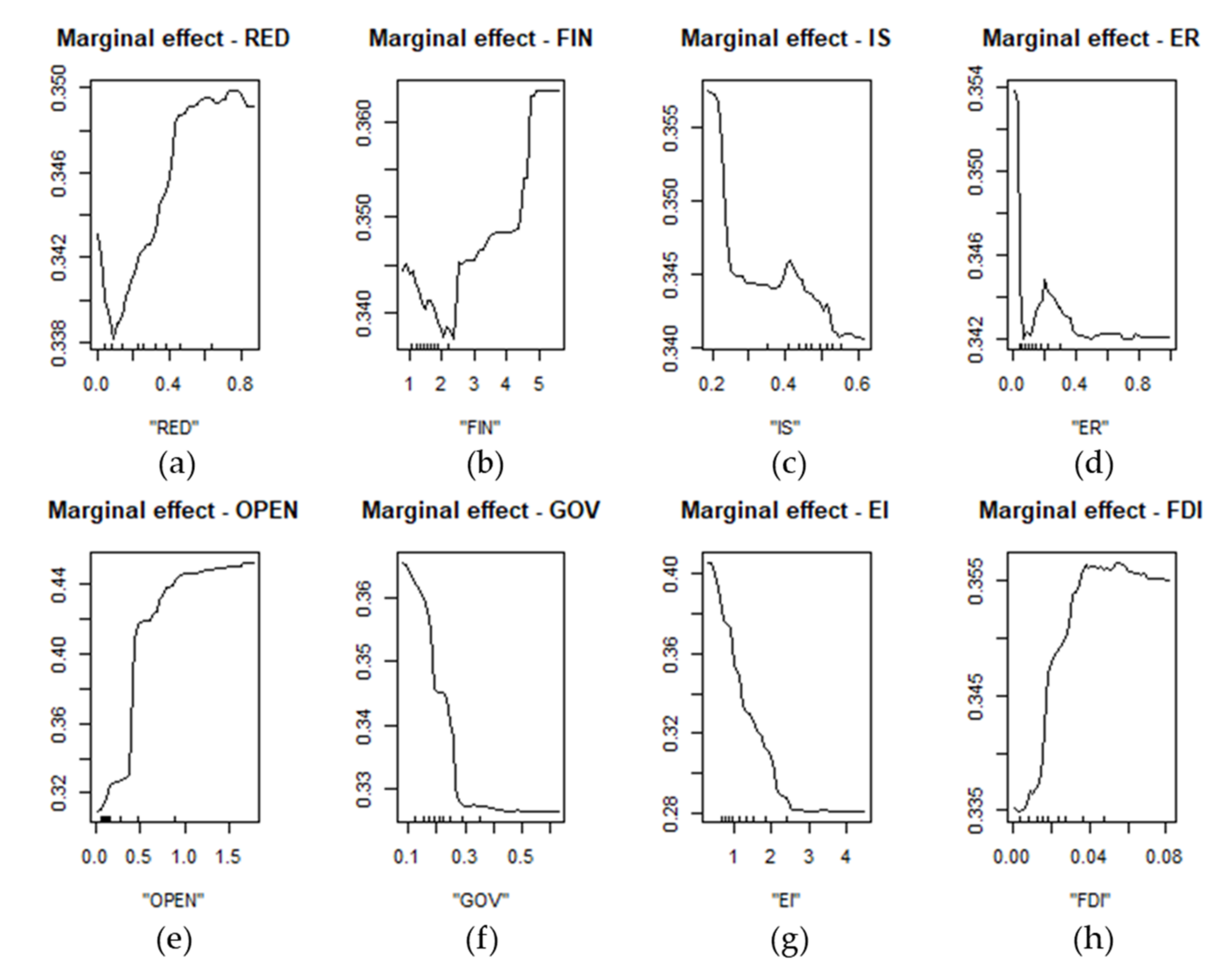
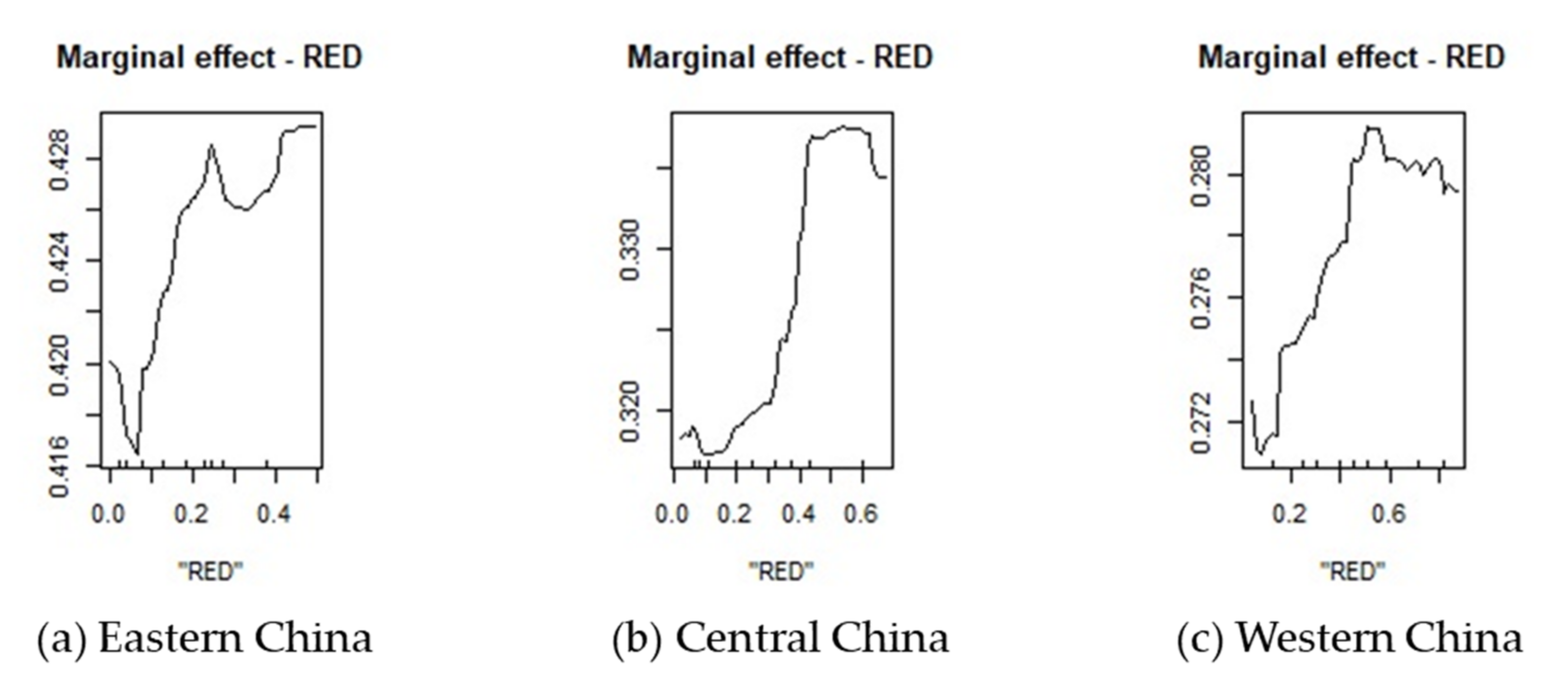
| Literature | Method | Input | Desirable Output | Undesirable Output |
|---|---|---|---|---|
| Zeng et al. [39] | EBM-DEA | Capital stock Labor Energy consumption | Real GDP | CO2 emissions |
| Xie et al. [40] | Super-SBM | Capital stock Labor Energy consumption | Real GDP | CO2 emissions |
| Du et al. [31] | Super-SBM | Capital stock Labor Energy consumption Machines | Industrial economic output | CO2 emissions |
| Li et al. [41] | Three-stage DEA | Capital stock Labor Energy consumption | Real GDP | CO2 emissions |
| Zhang et al. [42] | Three-stage DEA | Capital stock Labor Energy consumption | Real GDP | CO2 emissions |
| Variables | Definition |
|---|---|
| CEE | Carbon emission efficiency |
| RED | Percent of installed renewable energy capacity in the total installed capacity |
| FIN | Percent of balance of deposits and loans in GDP |
| IS | Percent of secondary industry in GDP |
| ER | Percent of industrial pollution control investment in GDP |
| OPEN | Proportion of total export–import volume in GDP |
| GOV | Percent of government expenditure in GDP |
| EI | Percent of total energy consumption in GDP |
| FDI | Percent of foreign direct investment in GDP |
| Variables | Number | Mean | Std. Dev | Min | Max |
|---|---|---|---|---|---|
| CEE | 390 | 0.3448 | 0.1072 | 0.1545 | 0.7640 |
| RED | 390 | 0.3026 | 0.2231 | 0.0008 | 0.8679 |
| FIN | 390 | 1.6898 | 0.7390 | 0.8186 | 5.5866 |
| IS | 390 | 0.4612 | 0.0832 | 0.1863 | 0.6148 |
| ER | 390 | 0.1500 | 0.1337 | 0.0067 | 0.9918 |
| OPEN | 390 | 0.3031 | 0.3656 | 0.0164 | 1.7705 |
| GOV | 390 | 0.2260 | 0.0971 | 0.0830 | 0.6269 |
| EI | 390 | 1.3315 | 0.7134 | 0.3256 | 4.4715 |
| FDI | 390 | 0.0230 | 0.0179 | 0.0004 | 0.0819 |
Publisher’s Note: MDPI stays neutral with regard to jurisdictional claims in published maps and institutional affiliations. |
© 2021 by the authors. Licensee MDPI, Basel, Switzerland. This article is an open access article distributed under the terms and conditions of the Creative Commons Attribution (CC BY) license (https://creativecommons.org/licenses/by/4.0/).
Share and Cite
Dong, F.; Qin, C.; Zhang, X.; Zhao, X.; Pan, Y.; Gao, Y.; Zhu, J.; Li, Y. Towards Carbon Neutrality: The Impact of Renewable Energy Development on Carbon Emission Efficiency. Int. J. Environ. Res. Public Health 2021, 18, 13284. https://doi.org/10.3390/ijerph182413284
Dong F, Qin C, Zhang X, Zhao X, Pan Y, Gao Y, Zhu J, Li Y. Towards Carbon Neutrality: The Impact of Renewable Energy Development on Carbon Emission Efficiency. International Journal of Environmental Research and Public Health. 2021; 18(24):13284. https://doi.org/10.3390/ijerph182413284
Chicago/Turabian StyleDong, Feng, Chang Qin, Xiaoyun Zhang, Xu Zhao, Yuling Pan, Yujin Gao, Jiao Zhu, and Yangfan Li. 2021. "Towards Carbon Neutrality: The Impact of Renewable Energy Development on Carbon Emission Efficiency" International Journal of Environmental Research and Public Health 18, no. 24: 13284. https://doi.org/10.3390/ijerph182413284
APA StyleDong, F., Qin, C., Zhang, X., Zhao, X., Pan, Y., Gao, Y., Zhu, J., & Li, Y. (2021). Towards Carbon Neutrality: The Impact of Renewable Energy Development on Carbon Emission Efficiency. International Journal of Environmental Research and Public Health, 18(24), 13284. https://doi.org/10.3390/ijerph182413284







